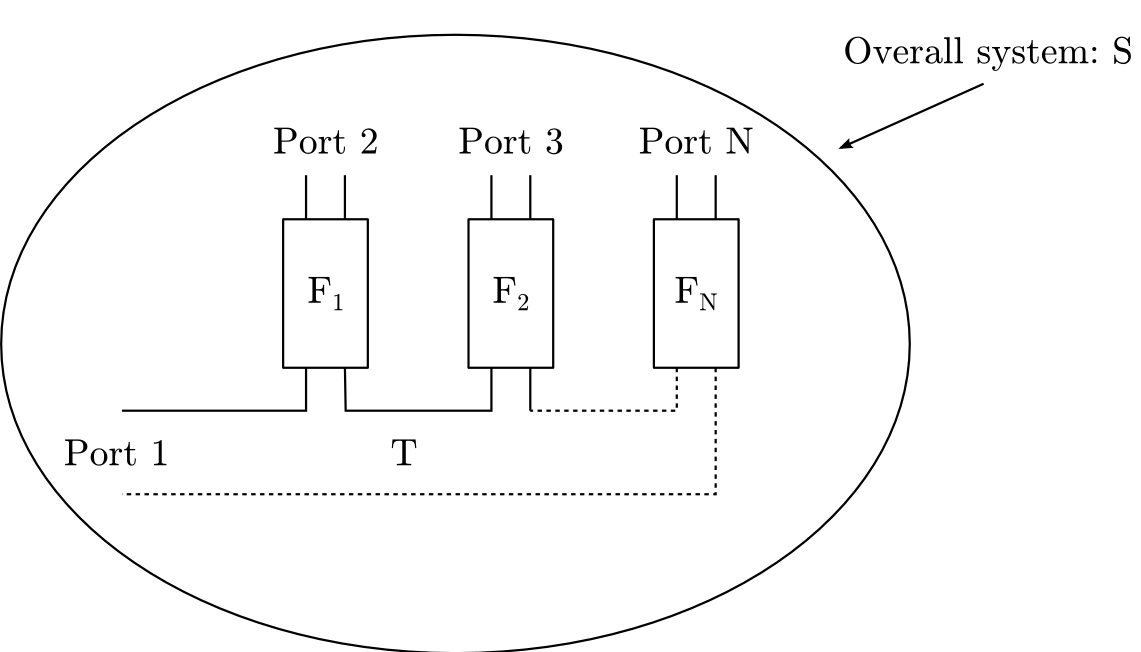Section: New Results
Matching problems and their applications - De-embedding of filters in multiplexers
Participants : Laurent Baratchart, Martine Olivi, Sanda Lefteriu, David Martinez Martinez, Fabien Seyfert.
This work has been done in collaboration with Stéphane Bila (Xlim, Limoges, France), Hussein Ezzedin (Xlim, Limoges, France), Damien Pacaud (Thales Alenia Space, Toulouse, France), Giuseppe Macchiarella (Politecnico di Milano, Milan, Italy), and Matteo Oldoni (Siae Microelettronica, Milan, Italy).
Matching problems and their applications
Filter synthesis is usually performed under the hypothesis that both ports of the filter are loaded on a constant resistive load (usually 50 Ohm). In complex systems, filters are however cascaded with other devices, and end up being loaded, at least at one port, on a non purely resistive frequency varying load. This is for example the case when synthesizing a multiplexer: each filter is here loaded at one of its ports on a common junction. Thus, the load is by construction non constant with the frequency, and not purely resistive either. Likewise, in an emitter-receiver, the antenna is followed by a filter. Whereas the antenna can usually be regarded as a resistive load at some frequencies, this is far from being true on the whole working band. A mismatch between the antenna and the filter, however, causes irremediable power losses, both in emission and transmission. Our goal is therefore to develop a filter synthesis method that allows to match varying loads on specific frequency bands.
Figure 6 shows a filter with scattering matrix
The matching problem of minimizing
where
which accounts for the losslessness of the filter. This problem can be seen as an extended Nevanlinna-Pick interpolation problem, that was considered in
[67] when the interpolation points
De-embedding of multiplexers
This work is pursued in collaboration with Thales Alenia Space, Siae Microelettronica, Xlim and under contract with CNES-Toulouse (see section 7.1 ).
Let
It is therefore natural to consider the following de-embedding problem. Given
what can be said about the filter's response? Note that the above assumptions do not bear on the junction. Nevertheless, we showed that the filter's responses are identifiable up to a constant matrix chained at their nearest port to the junction [73] . It was proved also that the uncertainty induced by the chain matrix bears only on the resonant frequency of the last cavity of each filter, as well as on their output coupling. Most of the filters' parameters can therefore be recovered in principle. The approach is constructive and relies on rational approximation to certain scattering parameters, as well as on some extraction procedure similar to Darlington's synthesis. Software development is under way and experimental studies have started on data provided to us by Thales Alenia Space and by Siae Microelettronica. A mid-term objective is to extend Presto-HF (see Section 5.3 ) so as to handle de-embedding problems for multiplexers and more generally for multi-ports.




